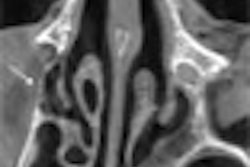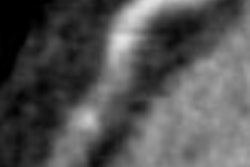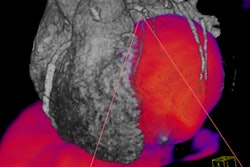Dear AuntMinnie Member,
Radiology's premier pan-European conference drew to a close today after five days of presentations on the latest in radiology research.
In one presentation that exemplifies the cutting-edge science being conducted in Europe, German researchers have developed an experimental CT scanner that uses flat-panel digital detectors rather than conventional multirow detectors. They did a test run of the new system and compared it to a 16-slice CT scanner in visualizing structures in the base of the human skull -- read about their work by clicking here.
In another ECR presentation, the state of interventional radiology was examined and found to be in urgent need of revitalization. Encroachment from other medical specialties is threatening radiology's hold on interventional procedures, according to the presentation, which you can read about by clicking here.
If you're interested in computer-aided detection, German researchers conducted a retrospective review of cancers missed on mammography and found that CAD could have helped radiologists find tumors that in some cases weren't detected until three or four years later. That story is available here.
In PACS news, Russian researchers report on their efforts to develop a nationwide teleradiology service. That's a big challenge in a country that encompasses 11 time zones and widely varying degrees of IT infrastructure and medical services. Read how they achieved their goals by clicking here.
Finally, take a look at our exclusive interview with ECR 2006 president Dr. Andy Adam, who discusses the highlights of this year's meeting, as well as the state of radiology in the U.K. That article is available here.
For more coverage from ECR, just click on the headlines in the column at right.



















